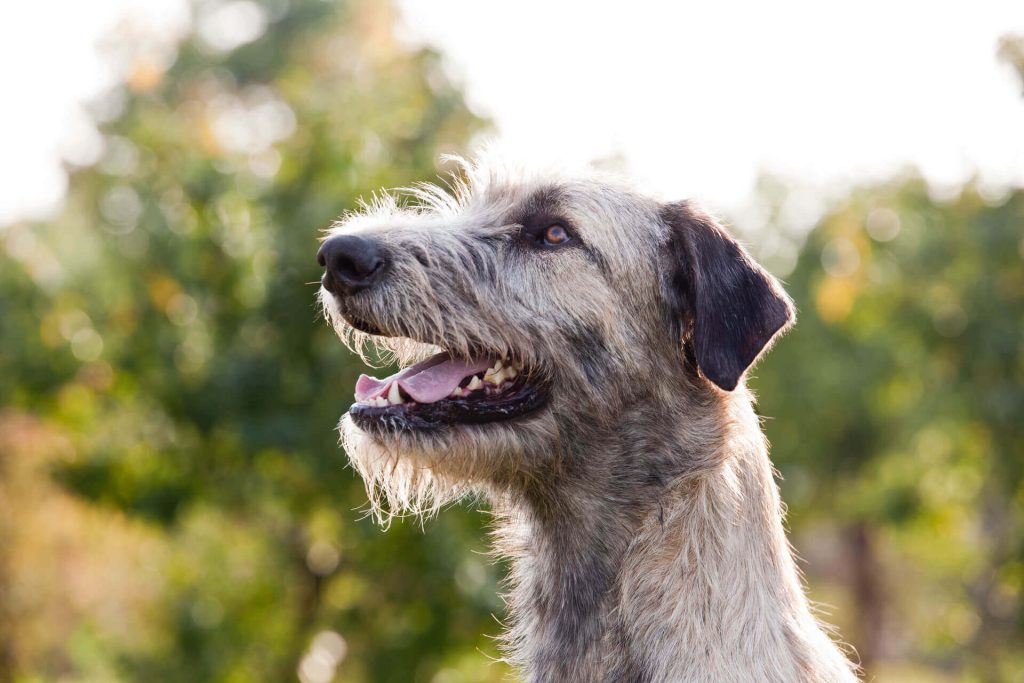The Relationship Between Age and Dog Behavior: What to Expect at Each Life Stage

The Importance of Understanding Dog Behavior at Different Life Stages
Age plays a significant role in determining a dog’s behavior and overall well-being. Each stage of a dog’s life is characterized by unique attributes, needs, and challenges. Whether you’re welcoming a puppy or caring for a cherished senior, recognizing the developmental transitions can help facilitate a nurturing and supportive environment for your furry friend.
Generally, dogs progress through several critical life stages:
- Puppy (0-6 months): This stage is marked by rapid growth and boundless energy. Puppies require intensive socialization during this period, which includes meeting different people, encountering various environments, and interacting with other animals. Proper training establishes good habits, shaping their future behavior.
- Adolescent (6 months – 2 years): As dogs become adolescents, their natural curiosity and energy peaks. This is often the time when they test boundaries and push limits. Owners may notice a more persistent attitude during training sessions. Consistent reinforcement and patience are crucial during this time to ensure a well-adjusted adult dog.
- Adult (2-7 years): In adulthood, dogs typically display a more stable demeanor. Their energy may decrease, but they still require regular mental and physical stimulation to prevent boredom. Activities such as agility training, puzzle toys, or daily walks become essential in maintaining their happiness and health.
- Senior (7+ years): Senior dogs often slow down, and their temperament might shift as their physical health declines. Owners may observe changes in behavior, such as increased withdrawal or anxiety. These changes may necessitate adjustments in their care routine, including a focus on joint health and cognitive enrichment.
As dogs grow older, their behavior evolves due to various factors, including health and social dynamics. For example, the bond developed with a puppy during its formative months often translates into a deeper trust and understanding in later years. Conversely, senior dogs might display unexpected quirks or changes in behavior due to age-related issues that require special attention.
This article will provide insights into what to expect from your furry companion at every age. As we delve into these critical changes, we will highlight unique challenges and joys that arise with each phase. Understanding how age impacts dog behavior not only prepares you for the journey ahead but also enhances the incredible bond you share with your canine friend.
By leveraging this information to inform your approach, you will find it easier to navigate the complexities of dog ownership through all life stages. Join us in exploring the captivating transformations that can affect your beloved pet as they travel through the intricacies of growing up and aging gracefully.

LEARN MORE: Click here to discover how to keep your pet safe and comfortable
Puppyhood: The Foundation of Behavior
The journey of any dog begins in their puppyhood, a crucial period from birth to about six months of age. This stage is not just a phase of endless play, but rather a vital time for socialization and learning. Puppies are like sponges, absorbing everything from their environment and experiences. Early and consistent exposure to various sights, sounds, and sensations fosters a confident and well-adjusted adult dog. Proper socialization during this time is essential; excluding this can lead to behavioral issues such as fear or aggression later in life.
The Need for Socialization
During the first few months, it is imperative to introduce a puppy to multiple contexts, including:
- People: Exposing your puppy to different ages, ethnicities, and genders can help them develop positive associations with humans.
- Other Animals: Interactions with other dogs and pets will teach your puppy various social cues and appropriate play behavior.
- Environments: Visits to parks, stores, and even car rides can help acclimatize your puppy to various stimuli.
Training during this stage should focus on basic commands, house training, and the establishment of a routine. Without a structured approach, puppies can easily develop unwanted behaviors such as barking or chewing on inappropriate items. Utilizing positive reinforcement techniques—like treats or praise—reinforces desired actions, making it an enjoyable learning experience.
Adolescence: Testing the Waters
Once a dog reaches the adolescent stage (approximately six months to two years), their behavior can become unpredictable as they begin to assert their independence. This phase, often marked by heightened energy and curiosity, can test the limits of a dog’s training. Unexpected behaviors, such as challenging authority or being easily distracted, are common as they explore their new found autonomy.
Managing the Adolescent Stage
The adolescent phase presents its own set of challenges, and dog owners should be prepared to reinforce training while maintaining a consistent routine. Key strategies include:
- Consistent Reinforcement: Continue to apply positive reinforcement methods to establish boundaries and expectations.
- Engagement: Provide ample physical and mental stimulation through activities like agility training or puzzle games to channel their energy constructively.
- Socialization Opportunities: Encourage interactions with other dogs and people to maintain their social skills and mitigate behavioral issues.
This phase is critical in shaping a dog’s future demeanor. Lack of consistent training and socialization can lead to long-term behavioral challenges, including anxiety and aggression. As your dog transitions into adulthood, the tools and habits established during adolescence will significantly influence their success as well-adjusted companions.
Understanding the peculiarities of each stage helps owners navigate their dog’s development effectively. In the following sections, we’ll continue to explore the distinct characteristics of the adult and senior stages, each bringing new joys and challenges that require our attention and care.
The Relationship Between Age and Dog Behavior: What to Expect at Each Life Stage
As dogs progress through their various life stages, their behavior and needs evolve significantly. Understanding these shifts is essential for pet owners in fostering a harmonious relationship with their furry companions.
Puppy Stage (0-6 Months)
During the puppy stage, dogs are curious and eager to explore their environment. Socialization plays a crucial role at this age, and proper exposure to different people, places, and situations can lead to a well-adjusted adult dog. Puppies are naturally inclined to play, which helps them develop important social skills. However, their energy levels can lead to hyperactive behaviors if not channeled correctly.
Adolescent Stage (6 Months – 2 Years)
Adolescence in dogs can be a challenging time for any owner. This period is marked by rebellious behavior and increased independence. Many dogs display a sudden surge in energy, and it’s not uncommon for them to test boundaries established during puppyhood. Consistent training and positive reinforcement are crucial at this stage to mitigate undesirable behaviors, such as chewing or excessive barking.
Adult Stage (2 – 7 Years)
Once dogs reach adulthood, their behaviors become more stable, making this an ideal time for advanced training and activities. Adult dogs are generally comfortable in their environment and exhibit a more defined personality. However, laziness can set in if they do not receive enough physical and mental stimulation. Regular exercise and engaged play can help maintain their health and happiness, fostering a strong bond with their owners.
Senior Stage (7+ Years)
In the senior stage, dogs may experience a decline in physical health and energy levels. Behavioral aspects also change. Senior dogs often become less active and may display signs of anxiety or discomfort due to health issues. Regular veterinary check-ups become essential to monitor their health. Understanding their limitations and providing an environment that adapts to their needs is critical for ensuring their well-being.
| Category 1 | Category 2 |
|---|---|
| Puppy Development | Critical socialization period for behavioral shaping. |
| Adolescent Behavior | Defined personality emerges along with energy spikes. |
| Adult Adaptation | Stable behavior; requires mental stimulation and exercise. |
| Senior Adjustments | Monitoring for health issues; adapting environments for comfort. |
Exploring these stages offers important insights into your dog’s behavior, allowing owners to nurture their pets throughout their lives effectively. By being attuned to their changing needs, you can ensure a joyful and fulfilling companionship as they grow.
DISCOVER MORE: Click here to learn about clicker training
Adulthood: The Prime of Life
The adult stage of a dog’s life generally spans from around two to approximately six years of age, depending on the breed. This period is often characterized by stability in behavior, as dogs become more settled and mature from the impulsive actions of their youth. However, this phase also brings unique challenges as well as the opportunity for refinement in training and socialization.
The Shift in Energy Levels
Many adult dogs exhibit a shift in energy levels; some may become more relaxed, while others remain quite active. Understanding your dog’s breed traits is crucial, as different breeds have varying needs for physical and mental stimulation. High-energy breeds like Border Collies or Jack Russell Terriers require more rigorous activity to stave off boredom and the potential for destructive behavior. In contrast, brachycephalic breeds like Bulldogs may have lower energy needs and prefer shorter bursts of exercise.
Maintaining a balanced routine is key. Daily walks, play sessions, and engaging activities—such as dog sports or obedience classes—can help your adult dog thrive. Overlooking these needs may lead to issues such as obesity or unwanted behaviors stemming from frustration.
Behavioral Training: Reinforcement and Refinement
Adult dogs still benefit from continual training that refines previously learned behaviors. Introducing new commands, advanced tricks, or tackling challenges such as scent work can help keep their minds active. This stimulation not only reinforces the bond between owner and dog but also enhances their overall behavior. Ongoing training can reduce anxiety and aggression, enhancing their adaptability to new environments or situations.
Moreover, as dogs enter their adult years, they may display dominance behaviors. Proper management and consistent reinforcement are essential to curtail any unwanted assertiveness, especially in multi-dog households. Adult dogs might also begin to exhibit behaviors influenced by their life experiences, making it important to remain observant and responsive to their individual needs.
Senior Dogs: Wisdom and Compassion
As dogs reach their senior years—typically around six to ten years of age, depending on breed—they often undergo significant physical and behavioral changes. This stage presents a unique opportunity to nurture a deep bond with your pet and to accommodate their evolving needs.
Understanding Aging Behavior
Senior dogs may experience cognitive decline similar to humans, known as Canine Cognitive Dysfunction (CCD). Symptoms may include disorientation, disrupted sleep patterns, and altered social interactions. Recognizing these signs early allows for better management through training and environmental adjustments, such as providing familiar spaces and avoiding stressful stimuli. Moreover, maintaining a consistent routine can offer comfort during this transition.
Physical changes, such as decreased mobility and strength, can lead to a shift in behavior as well. Senior dogs might slow down during play or become less interested in vigorous activities. To assist your aging dog, consider adjusting their exercise regimen to low-impact activities like gentle walks or swimming, which are easier on their joints while still offering benefits.
Special Considerations for Health and Wellbeing
Routine veterinary check-ups become increasingly important in the senior stage. Regular health assessments can identify age-related health issues early, which might otherwise lead to changes in behavior. Tailored nutrition, supplements, and even prescription diets can have profound effects on a senior dog’s overall health and mood, thus impacting their behavior.
The relationship between age and dog behavior is both intricate and layered. Each life stage presents specific challenges and opportunities for growth, understanding, and nurturing. By being attentive to the nuances of your dog’s behavior at each phase, you can ensure that they enjoy a fulfilling and healthy life as a cherished companion.
LEARN MORE: Click here for essential tips on pet nutrition
Conclusion: Navigating the Canine Lifecycle
The intricate relationship between age and dog behavior is a reminder that each life stage brings unique experiences and needs. From the spirited enthusiasm of puppyhood to the tranquil wisdom of senior dogs, understanding these behavioral shifts is essential for building a strong, lasting bond with your canine companion. As they progress through their lives, dogs require flexibility in their care and engagement to thrive.
The transition into adulthood marks a pivotal moment where dogs become more stable yet require consistent mental and physical stimulation to prevent behavioral issues. As they move into their senior years, owners must be prepared to accommodate for physical changes and cognitive decline. This adaptation helps create enriched environments that support their well-being and comfort.
Moreover, recognizing the impact of weathering life experiences can significantly influence a dog’s behavior, making it crucial for pet owners to be both observant and responsive. Regular veterinary care, tailored nutrition, and appropriate exercise not only enhance a dog’s quality of life but also ensure they maintain their joyful spirits through every phase.
Ultimately, fostering a nurturing relationship throughout a dog’s life stages cultivates mutual understanding and respect. Each moment spent observing changes and responding to your dog’s evolving needs can lead to a happier, healthier partnership. So, engage actively with your pet, embrace their unique behavioral traits at every age, and cherish the journey of companionship. Your attentiveness can ensure that your loyal friend enjoys their life stages to the fullest.


